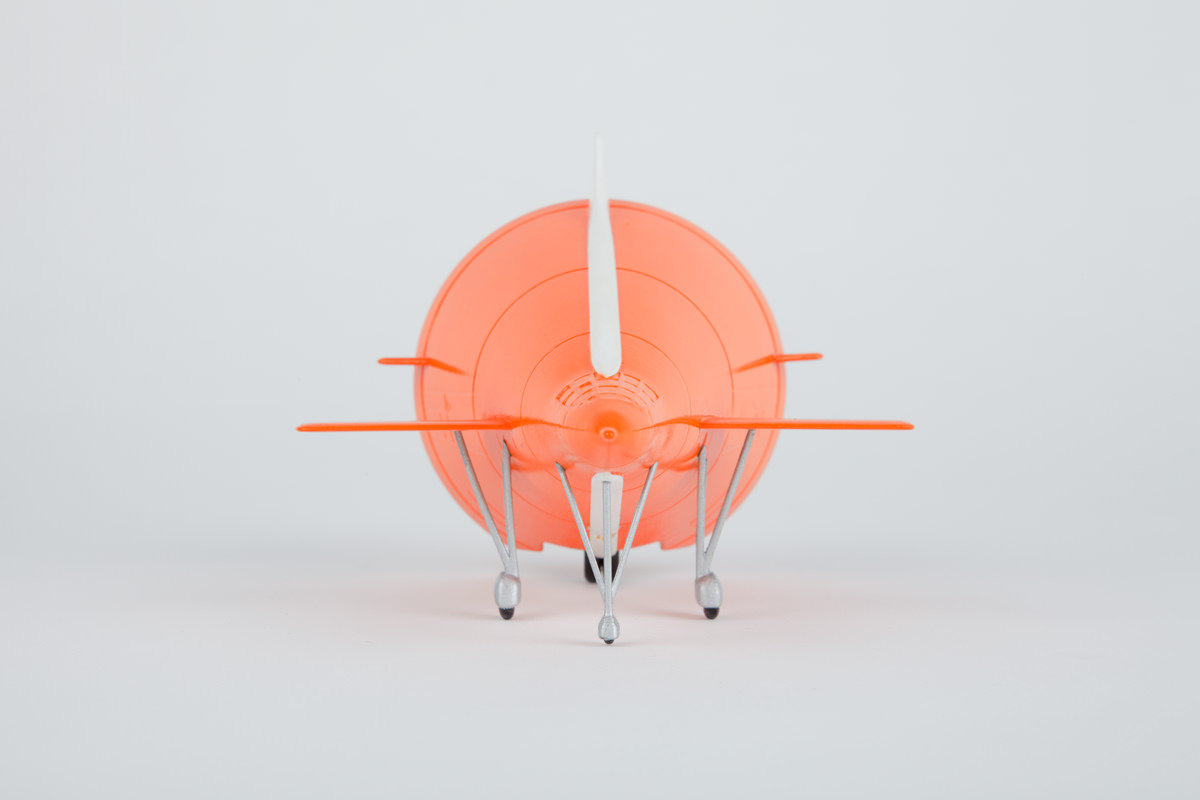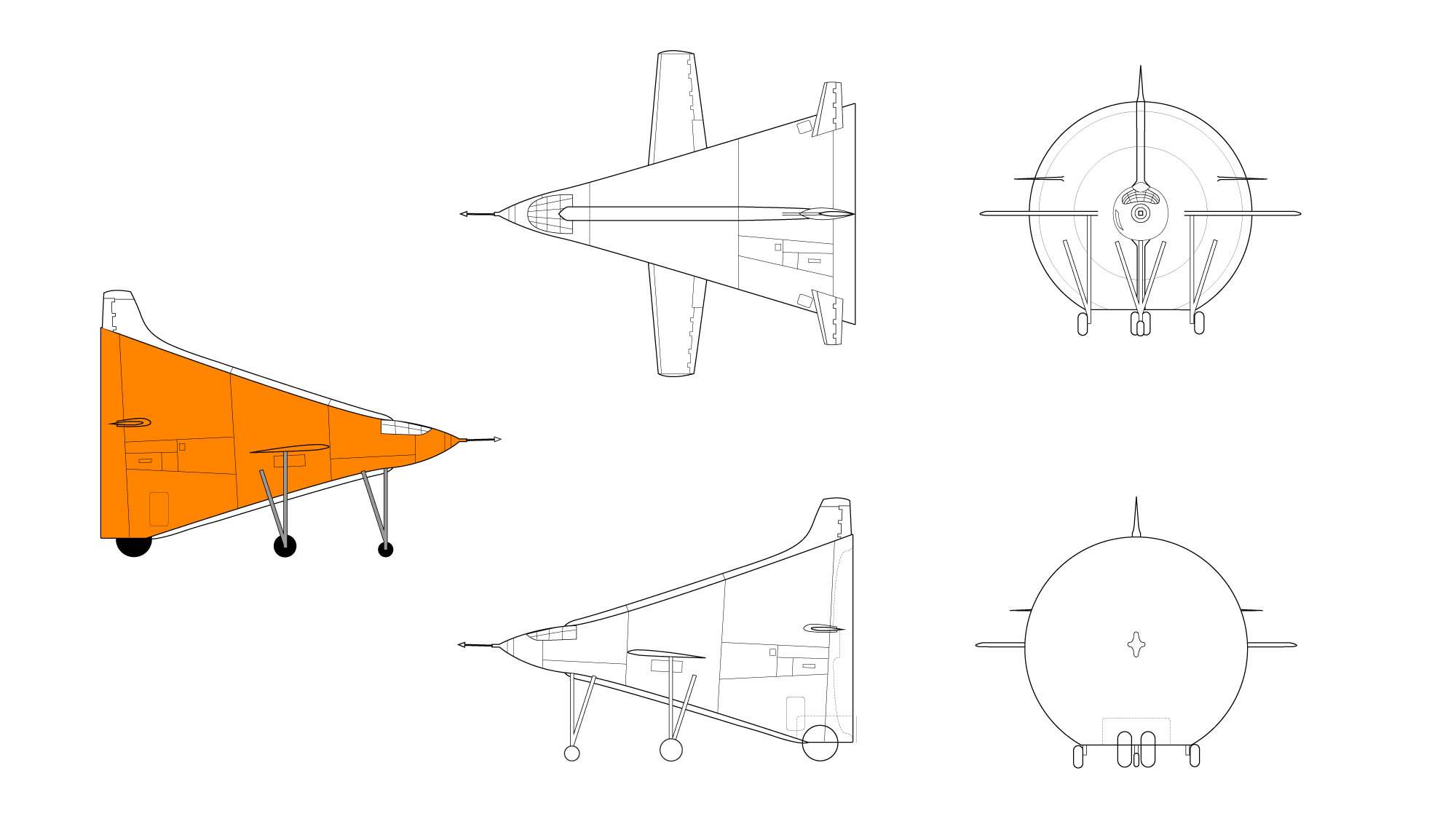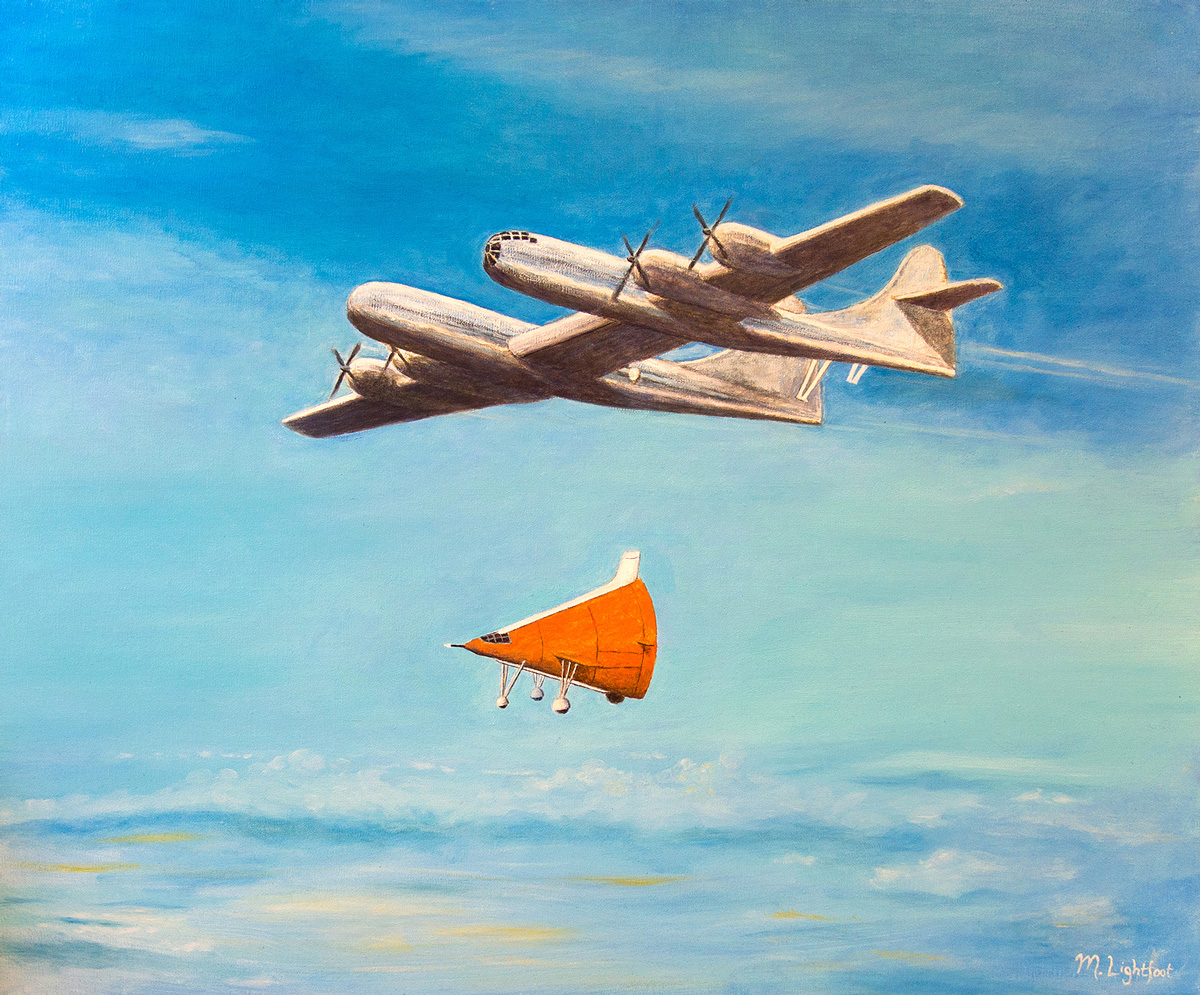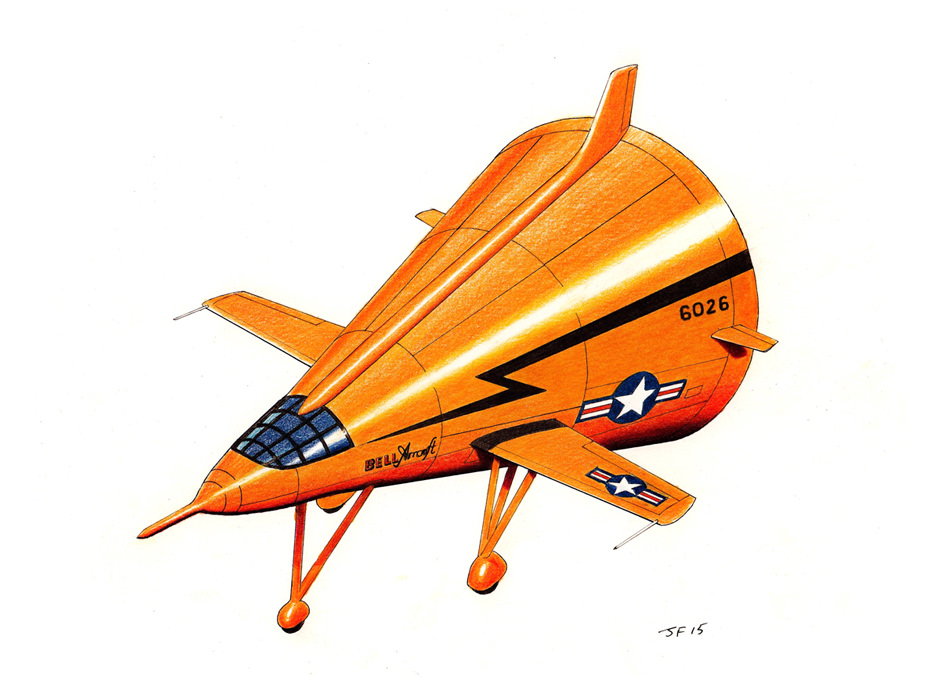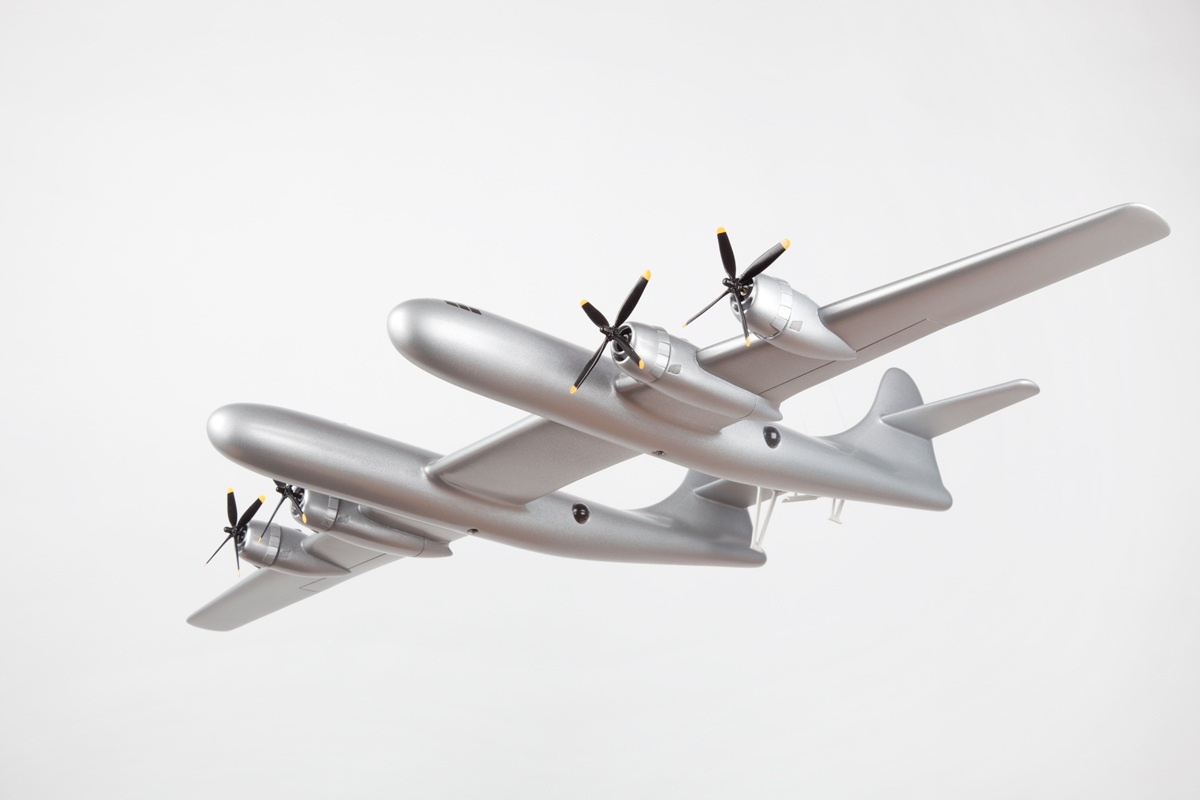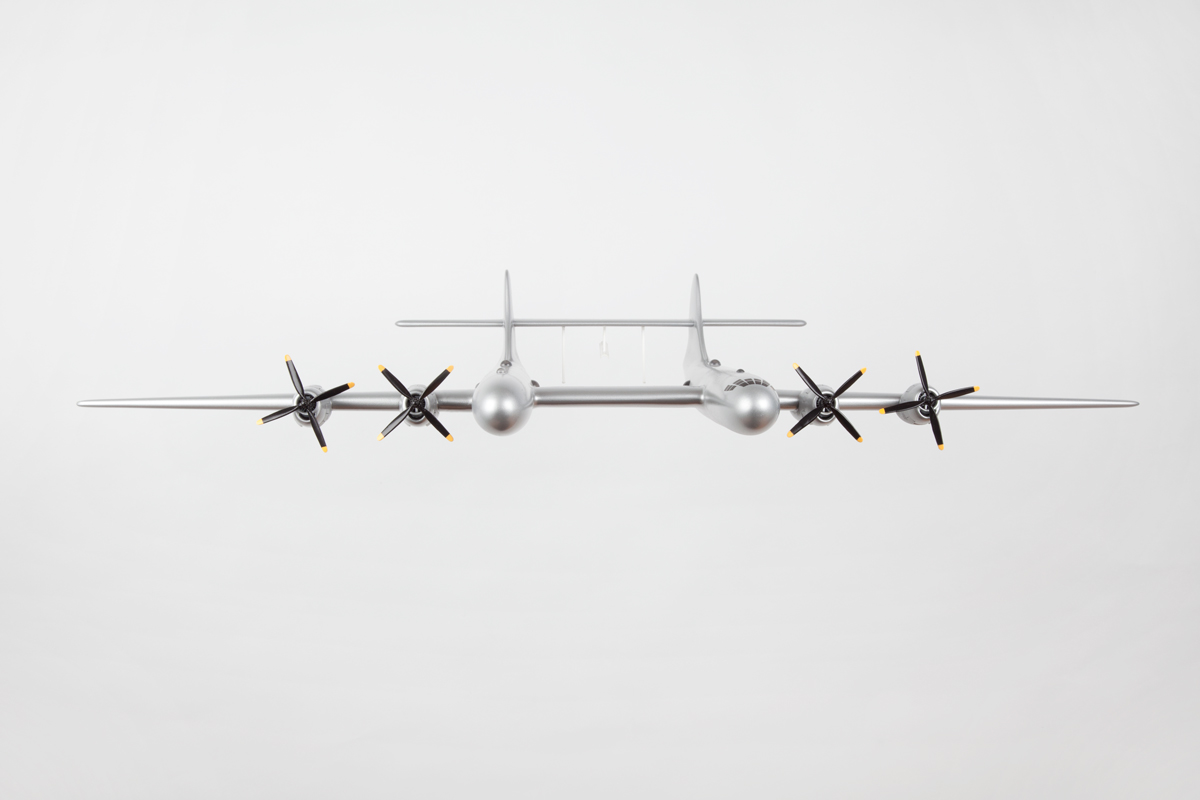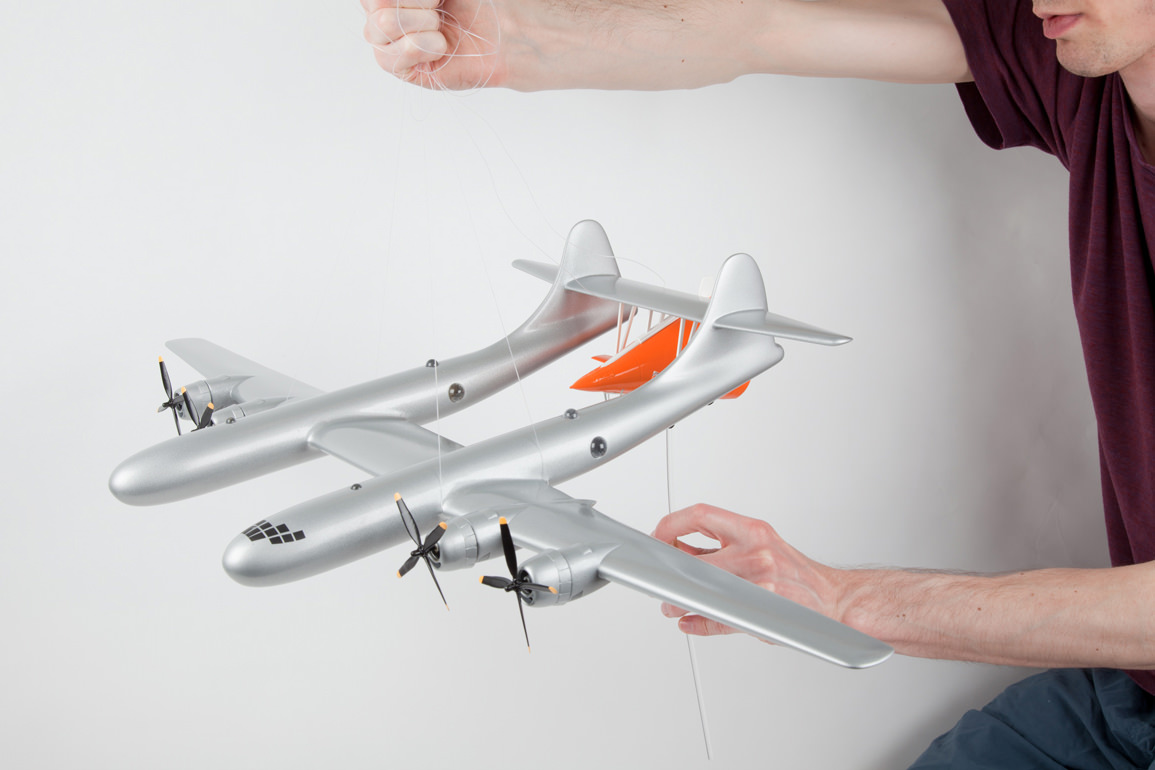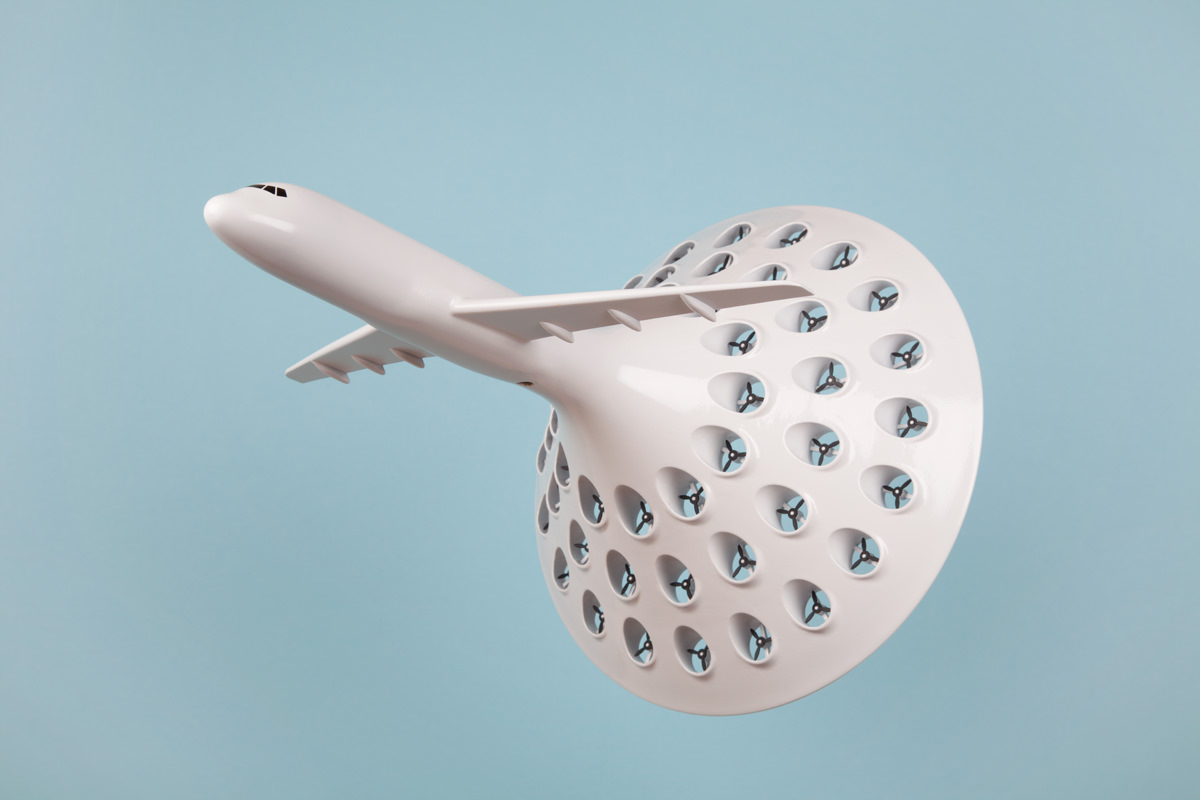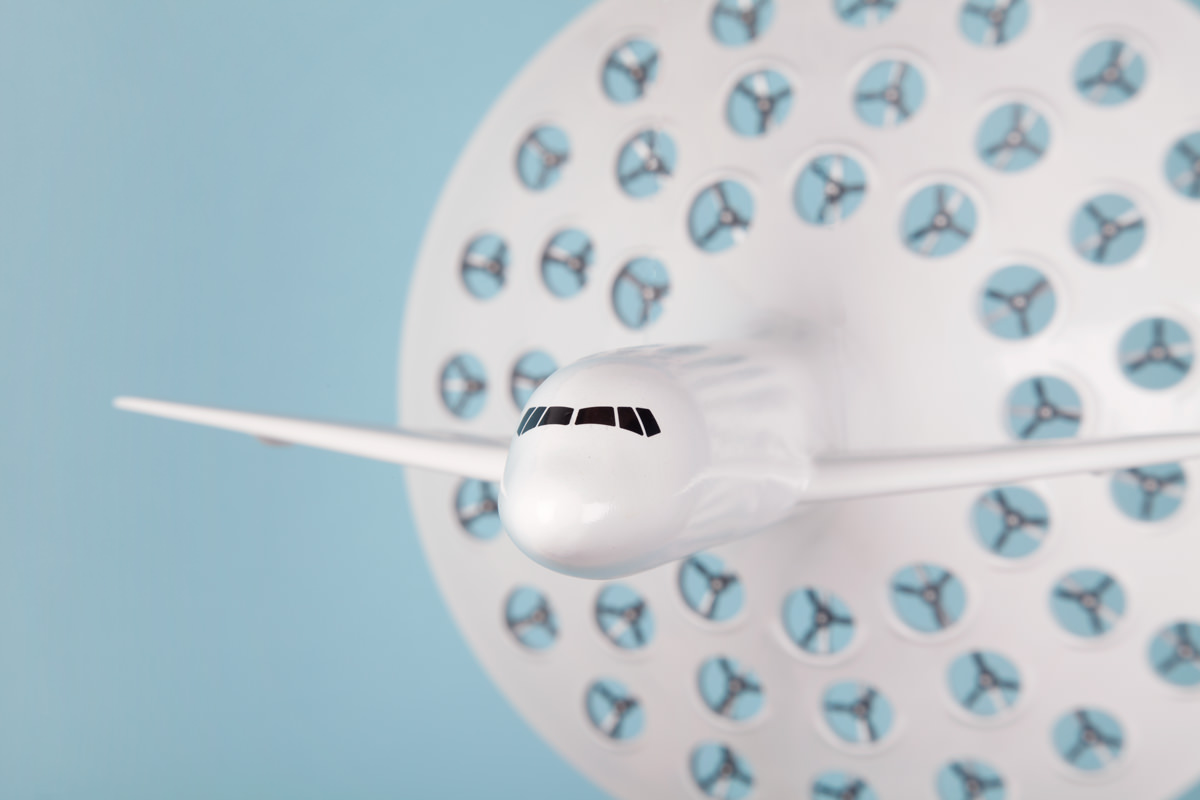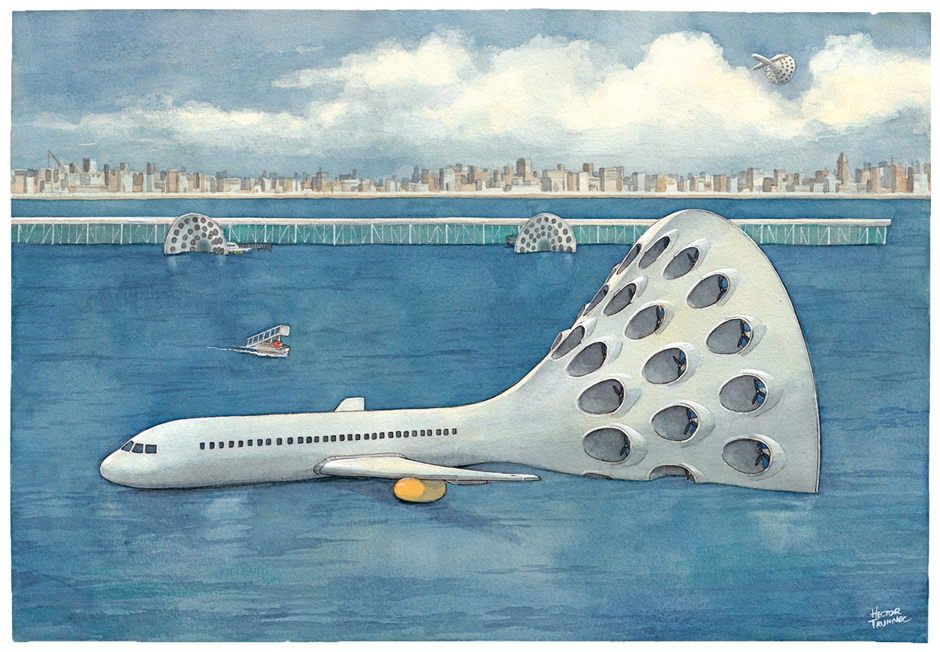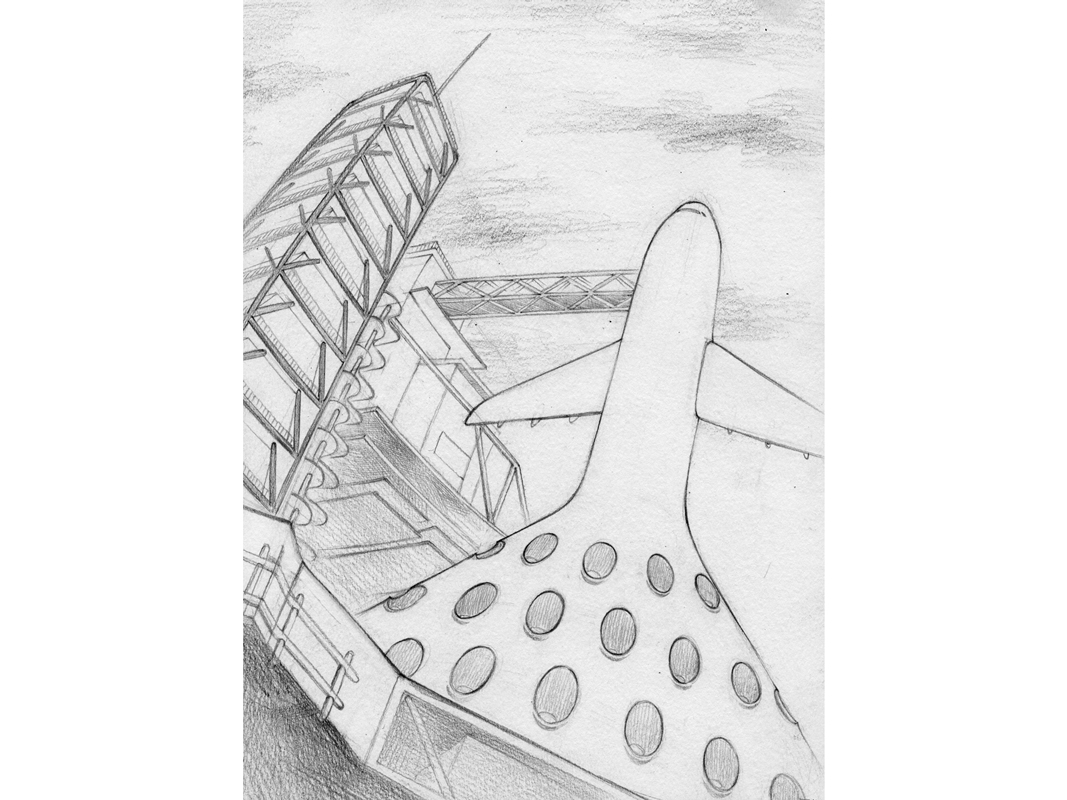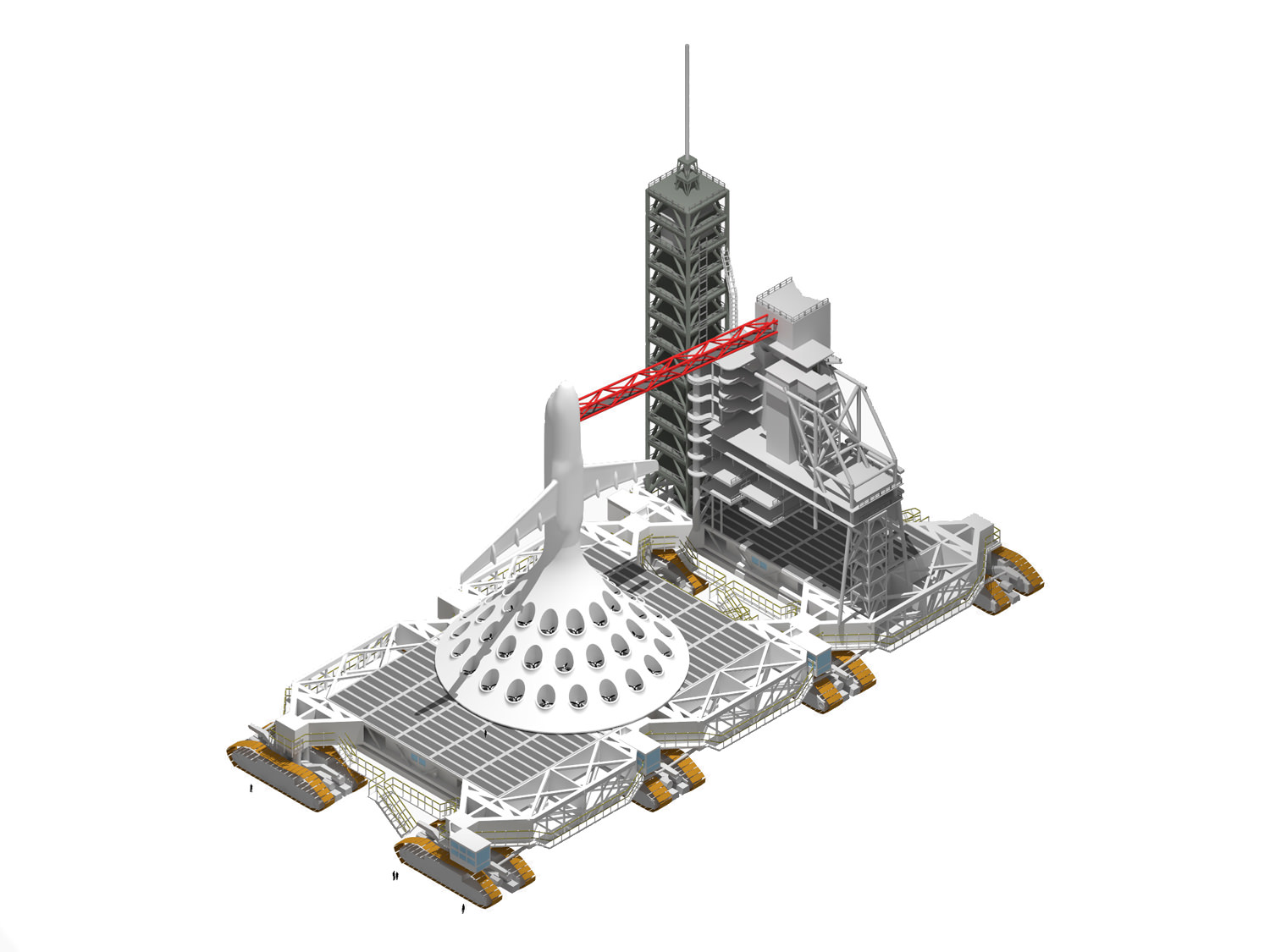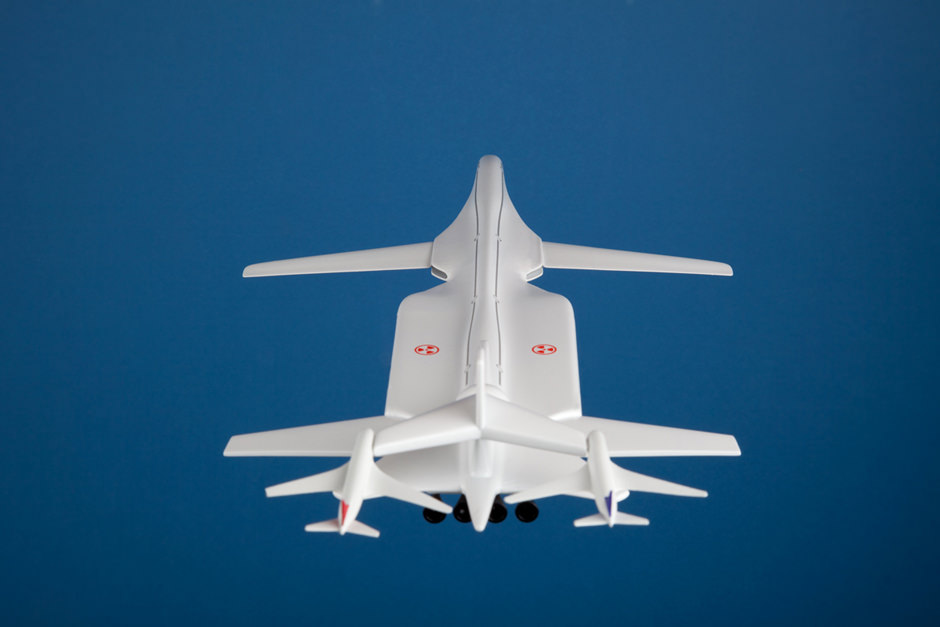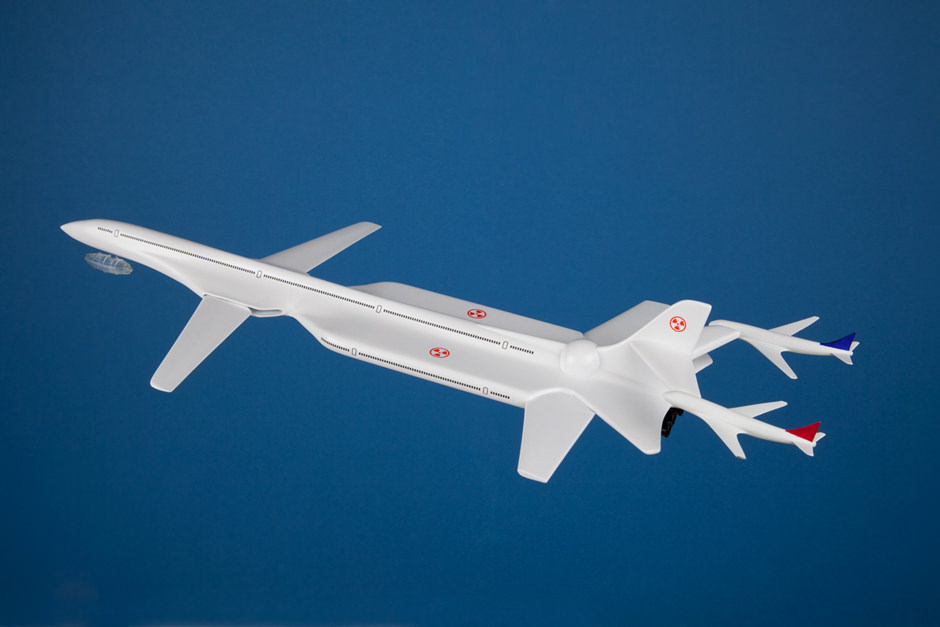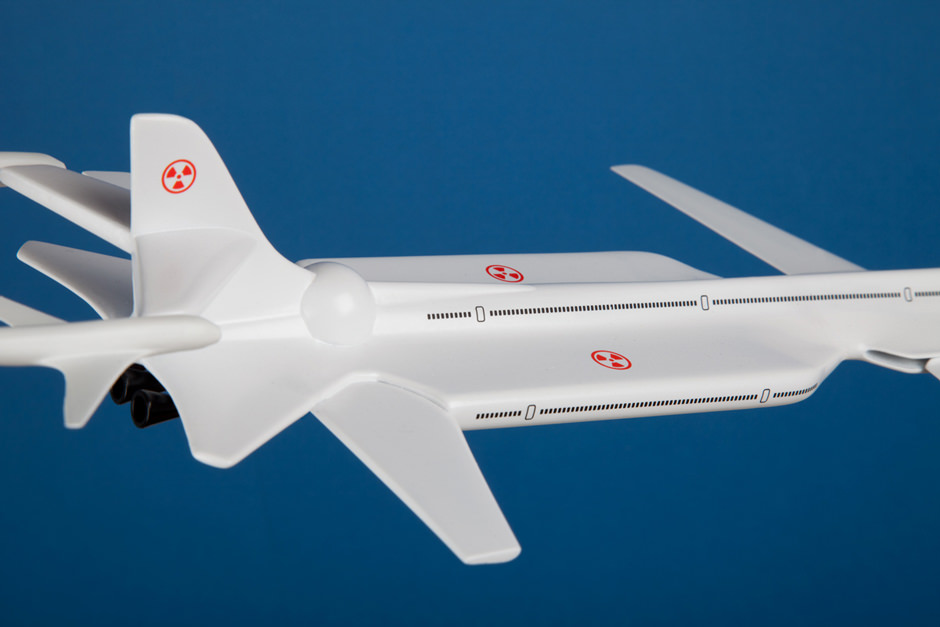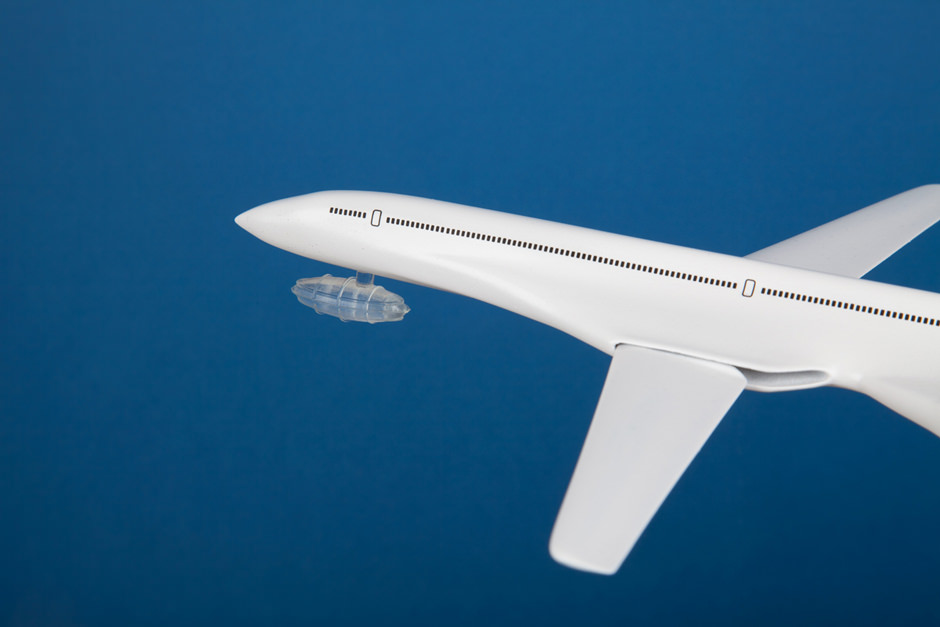

High-Speed Horizons is a design-driven, critical exploration into technology, innovation, big thinking, and our constantly changing attitudes towards the three, told through projected visions of alternative energies and flight.
Blue-sky Thinking
Man has always looked to the sky to push the boundaries of possibility through innovation and new technologies. The concept of controlled flight has always been viewed as a test bed for radical new ideas and visions to reshape culture, politics and economics here on Earth and far beyond it.
The history of aviation is full of dreams of alternative futures. Some came to fruition, while others did not. And sometimes, we have been teased with a promising vision only to have it end due to political, economic or other pressures.
The capital required to research and develop new potentials in this field costs more than almost anything else on Earth. What comes out of this innovation is as equally awe-inspiring as it is destructive. While the funding and intentions for flight are often controversial one thing cannot be argued, the sky will always give us room to dream.
Ideas and ideologies are embodied in the design of objects with one of the most prominent examples being aircraft. Wishful thinking of what ifs are condensed into strikingly simple and concise briefs and tested through large-scale and high budget design and engineering.
Oftentimes the more speculative end of aircraft design is top secret. One such example of this is the American X-Plane program which began after WW2 and is still in operation today. Started with the X-1 aircraft this single program is responsible for shaping some of the most significant political, economic and cultural developments in the last 60 years from global affairs and space exploration to modernizing warfare all simply from designing experimental aircraft. From breaking the sound barrier to exploring military uses for space, while they may not always come true experimental aircraft put forth visions of what the future could hold.
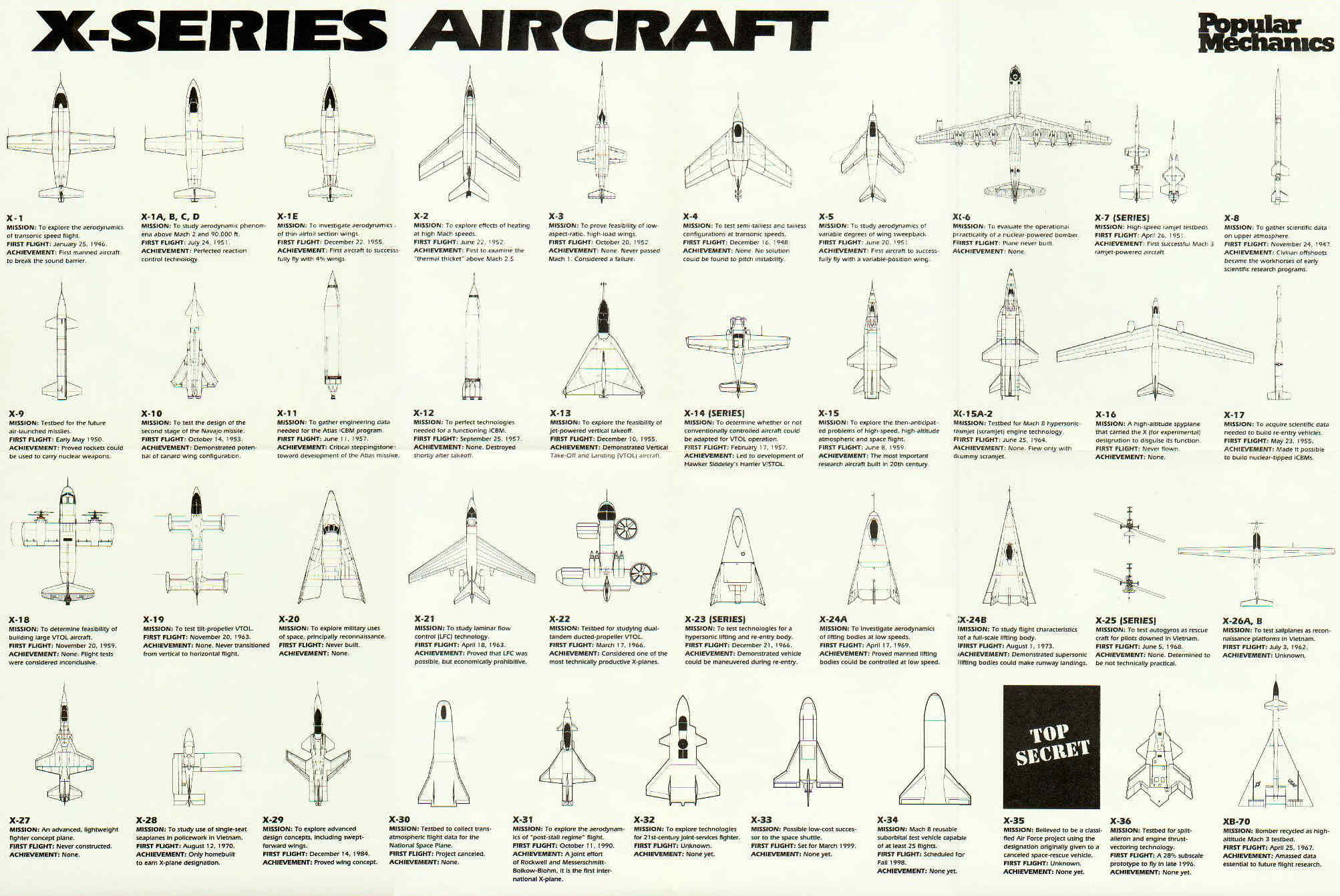
List of known American X-Planes from 1946-1996. Popular Mechanics magazine late 1990s.
Noteworthy X-Planes
| Name | First Flight | Mission | Achievement |
|---|---|---|---|
| X-1 | 1946 | To explore the aerodynamics of transonic speed flight | First manned aircraft to break sound barrier |
| X-6 | Never built | To evaluate the operational practicality of a nuclear-powered bomber | None |
| X-12 | 1957 | To perfect technologies needed for functioning intercontinental ballistic missles | None. Destroyed shortly after takeoff |
| X-13 | 1955 | To explore the feasibility of jet-powered vertical takeoff | Demonstrated Vertical Take-Off and Landing (VTOL) |
| X-15 | 1959 | To explore the problems of high-speed, high-altitude atmospheric and space flight | The most important research aircraft built in the 20th century |
| X-70 | 1964 | Mach 3 testbed aircraft intended to further develop into an American-made supersonic commercial transport (to rival Concorde) and separately a high altitude nuclear bomber | Amassed data essential to future flight research. Research into other planes ended before planes flew. |
| X-20 | Never built | To explore military uses for space, primarily reconnaissance | None |
| X-29 | 1984 | To explore advanced design concepts, including swept forward wings | Proved wing concept |
| X-37 | 1999 | Top secret reusable unmanned spacecraft | Not publically known. Missions currently underway. Aircraft continuously makes headlines surrounding its mysterious intentions. View the latest here. |
Sonic Boom Supersonics
The breaking of the sound barrier in 1947 by Chuck Yeager and the X-1(XS-1) aircraft ushered in a new era of aviation that was no longer limited to the constraints of subsonic flight. This major breakthrough opened up a new field of supersonic research intended to push the boundaries of what was possible by man and led to experimentation in aerodynamics and new propulsive systems.
Video originally from Sound Barrier entry on Wikipedia
The Sonic Boom
Traveling at supersonic speeds had a particularly new side effect not seen before by an aircraft, the sonic boom. This release of pressure energy as the aircraft traveled faster than the speed of sound caused a powerful shock wave to propagate out over the landscape as auditory and vibrational disturbance.
A resulting pressure wave caused by supersonic travel has the potential to carry immense amounts of energy. The one created by the asteroid that struck Chelyabinsk, Russia in 2013 carried a force equivalent to 30 atomic bombs and a shock wave that circled the globe twice.
As a sonic boom is indeed a source of energy why do we not see this as an opportunity instead of an obstruction. An aircraft traveling above Mach 1 makes a sonic boom and a sonic boom is a source of energy so in theory it would make the most efficient and sustainable energy source imaginable satisfying our dream of truly green aviation.

X-1SB
"Sonic Sundae"
The X-1SB is a counterhistorical research aircraft designed to test the feasibility of sonic boom propulsion. Its cone shape design is the combination of a .50 caliber bullet (an object know to be stable while breaching the sound barrier) just like the design of its predecessor the X-1 aircraft, and the shape of the shock wave created by an object traveling faster than sound. The aircraft is more commonly referred to as the "Sonic Sundae" for its close resemblance to the cup the well-known dessert is often served in.
The front of the aircraft features a housing for an interchangeable triangular spike used to test how different shapes could create potentially optimized shock waves to use for propulsion. The aircraft’s interior space houses a cockpit for one pilot along with a state of the art sonic boom-powered engine.
B-29 Duo
"Double Mama"
The B-29 Duo is a counterhistorical carrier aircraft for the X-1SB. The X-1SB like many experimental high speed aircraft is air launched. While most aircraft can fit under the fuselage or wing of a larger aircraft for taxiing and takeoff the X-1SB is not capable of such due to its large rear circumference.
This prompted the creation of a specialized twin fuselage B-29 aircraft which could hold the X-1SB and give the B-29 Duo enough ground clearance under the X-1SB for takeoff.

Since man has been able to travel faster than sound, sonic booms have been a major reason why supersonic aircraft have not become more commonplace. There are currently laws above many countries preventing aircraft from flying above Mach 1 due to the shock wave's auditory and vibrational disturbance.
Limiting the impact of sonic booms has become a hot topic in the aviation industry as of late as many are dreaming that we may be on the cusp of the next supersonic age. But if it is to succeed unlike the last one it needs a more stable energy source free from the influence of global affairs, politics and planet scarring infrastructure. Something that we can quickly produce and have complete control over — like sonic booms.
Boomjet
Sonic boom-powered commercial transport
Boomjet is a sonic boom-powered passenger aircraft. It sustains its flight by driving 47 propellers from the pressure energy released by the aircraft as it travels faster than the speed of sound. The sonic boom transport vehicle (SBT) stores excess energy which is used for vertical takeoff (VTOL).
Boomjet's vertical launch mimics the methods commonly used by helicopter, quadcopter and space shuttles during takeoff. The aircraft lands vertically or in water if necessary depending on location and the local airport infrastructure.
Nuclear-Powered Enterprise

USA’s Convair NB-36H Peacemaker experimental aircraft in 1955. Image from aircraft's Wikipedia page.
Cold War tension between the US and USSR in the 1950’s saw the rise of the nuclear-powered aircraft. While the risk was high, nuclear power promised an aircraft with theoretically unlimited range capable of constant flight. It was the ideal energy source for acting at a moment’s notice.
There were only two (known) nuclear aircraft that were fully built and tested. The NB-36H also know as “The Crusader” was America’s nuclear-powered aircraft. Refitted for this new propulsion system after it was damaged in a storm and deemed unfit for combat. It featured a direct phone line to the President of the United States that was to only be used in the event of an incident. The Soviet Union’s aircraft, the Tu-95L, was based on the Tupolev Tu-95 strategic bomber aka the "Russian Bear". At 60+ years old the Tu-95 (non-nuclear variant) is still in operation and is the plane used by Russia to show its military prowess by flying within an arms reach of British airspace every now and then.
Both countries had ambitious plans for their second nuclear-powered aircraft but due to environmental concerns, political pressures, and hearing word that the other side called off their research both were scratched.

We seem to have abandoned this vision of virtually unlimited mobility on a global scale seeing the risk involved as too dangerous but it has not stopped us from having nuclear-powered aircraft carriers, submarines and 11% of all the world’s electricity being based on nuclear power.
If we found a new use for this promising technology that fulfilled a contemporary need similar to the inventiveness shown during the Cold War it could lead to a new age of the nuclear-powered aircraft.

With today's technology companies beginning to surpass the capital of entire nations and, increasingly, becoming the target of government inquiries, the technology sector could take to the sky to further innovation free from the restriction of regulation utilizing the energy source historically clouded by politics to sustain continuous flight and prove that anything is indeed possible through innovation.

Air Laissez-Faire
Nuclear-powered free enterprise aircraft
Air Laissez-faire is a self-piloting always airborne nuclear-powered free enterprise aircraft. It makes the furthering of innovation outside the jurisdiction of governance and sovereign airspace possible by enabling forward-thinking entrepreneurs and others with innovative ideas to pursue their visions without the hinderance caused by legislation, taxation and other external oversight. Air Laissez-faire is 158 meters long and provides workspace, accommodation, an air-based airport terminal, as well as other amenities such as an esplanade extending the length of the aircraft and a 360 degree glass enclosed multipurpose space hanging down from the aircraft’s nose.
The aircraft is self-piloting to ensure safe operation and to eliminate pilot misuse or error during flight. It constantly circles the globe avoiding sovereign airspaces powered by its on-board nuclear power plant which provides virtually limitless amounts of power to keep it flying and those on board innovating.
Acknowledgements
Research and design:
Tim Clark
www.tlclark.com
Project development and direction assistance:
Tony Dunne, Fiona Raby, James Auger, Frank Kolkman
Web development:
Diana Tanase, Henrik Nieratschker
Photography:
Juuke Schoorl
Concept render artists:
Hector Trunnec, James Fletcher, Michael Lightfoot, Jinhee Park,
Rodrigo Leburn
Digital Fabrication assistance:
Alastair Hamer, Karleung Wai
3D modeling assistance:
Yermek N., Daniel Gravidez
Aerospace engineering consultant:
Xxxx Xxxxxxx
Production assistance:
Deborah Tchoudjinoff, Martha McGuinn, Thomas Grogan
Model aircraft consultant:
Rodrigo
Lebrun
Font:
Sugiyasu
Scales of physical aircraft models:
X1-SB and B-29 Duo: 1:72
Boomjet SBT: 1:144
Air Laissez-faire: 1:400
Research based on the text Hijacking Sensibility (2014) by Tim Clark
Historical X-Plane photo from NASA.gov photo archives
For more writers, artists and designers who use aircraft design to suggest ideas and visions see the work of Jules Verne, Norman Bel Geddes, Luigi Colani, and Panamarenko.
Special thanks to the British Library for their collection of obscure aircraft books and space to think and write, NASA for making their research and history so open and accessible, the Design Interactions department at the Royal College of Art for 10 years of redefining design and Mariah Wright for her overwhelming support throughout this project.
© Tim Clark 2015



